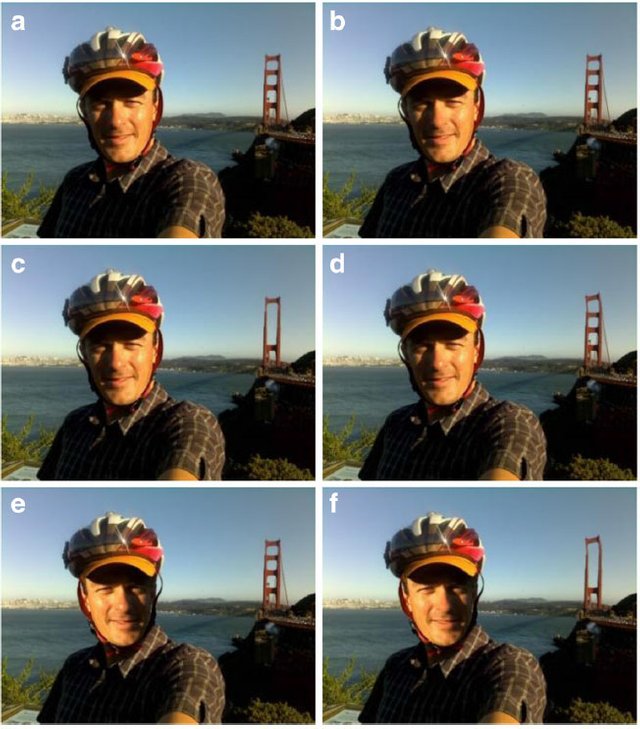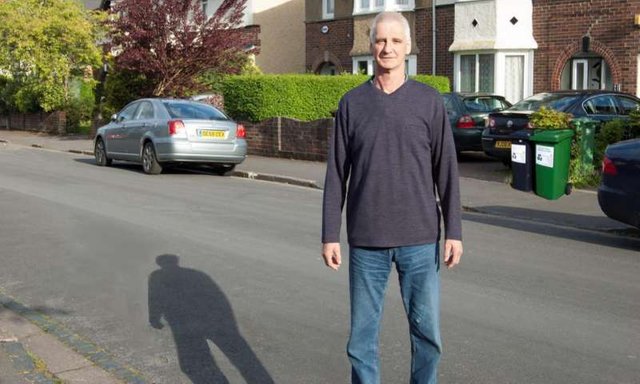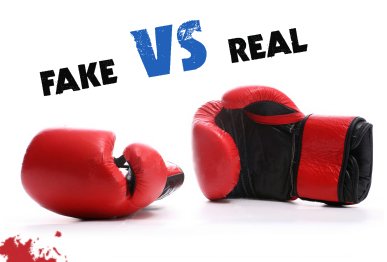Fake vs. Real Images: Can People Distinguish Them?
Scroll through social media, look at TV, a movie or even a magazine, and we see many images that depict reality. In certain cases we know that much of what we're seeing can be fake and made up. We look at movies and know that there is CG and other trickery to show us something pretending to be a reality. A fantasy reality is created for us to immerse ourselves into and "enjoy the ride".
In the past, computer graphics were not the main way to fabricate a reality that didn't truly exist. Miniature models were built, along with special effects in makeup, and this was how movies like Star Wars and The Thing (among many others) were able to create another reality for us to believe in. How much are we made to believe in things that aren't real?
In our modern era, computer graphics and photography is capable of creating compelling fakes that many are unable to detect as such. Manipulated photos are all around us, and we take them on face value as a true representation of reality.
How good are people at detecting photo forgeries?
To find out, some new research was carried and published in a study called "Can people identify original and manipulated photos of real-world scenes?", in which 659 people between the ages of 13 and 70 took part in viewing images. There was an original image, followed by digitally altered copies using techniques of airbrushing parts of the body, and adding or subtracting objects like parts of a bridge or a trash can that wasn't even there. Some changes were plausible, while some were implausible such as incorrect shadow manipulation.
When participants were asked "do you think this photograph has been digitally altered?", only 58% of the original unaltered images were correctly identified as such, while 65% of images that had been altered were correctly spotted.
The results are to be taken with a grain of salt, since a chance performance to get the right or wrong answer is 50%, meaning the results are only slightly better than if participants had chosen randomly. 56% of image manipulations were correctly located, even when someone originally thought the image was an unedited original. This indicates that we can potentially spot fakes if we take longer to try to identify them. But even in some images identified as altered, many people couldn't locate where exactly the manipulation was.
Overall, the research suggests people are very limited in their ability to identify manipulations of real-world scenes.
How well do you think you would do?
Here's one of the images. See if you can find which one is the original, and in which ways others are altered. Below are the answers that you can verify.

Manipulated image. Credit: Sophie Nightingale/University of Warwick
a Original photo; b airbrushing—removal of sweat on the nose, cheeks, and chin, and removal of wrinkles around the eyes; c addition or subtraction—two links between the columns of the tower of the suspension bridge removed; d geometrical inconsistency—top of the bridge is sheered at an angle inconsistent with the rest of the bridge; e shadow inconsistency—face is flipped around the vertical axis so that the light is on the wrong side of the face compared with lighting in the rest of the scene; f super-additive—combination of all previously described manipulations. Original photo credit: Vin Cox, CC BY-SA 3.0 license. Photos b–f are derivatives of the original and licensed under CC BY-SA 4.0
Presently, nearly anyone can make a convincing photo forgery. We need to be vigilant in trusting the authenticity of images. Advertising and marketing campaigns are all over the place, influencing us with images that purport to represent reality. Some of us know this isn't the case, as the infamous airbrushing of models in magazines can demonstrate. These unreal representations, such as unrealistic body images that others are influenced into imitating, can cause insecurity and lower levels of mental health and well-being when we don't match up to the unreal levels of "perfection" being pushed on us.
In a world where we have grown accustomed to accepting fake images, we are becoming less and less aware of how to distinguish the differences between real and fake. With "augmented reality", we seem to want more unreality placed on-top of reality.
The area to be most concerned for fake imagery, is in the news. Fake news is all the hype in the mainstream media, but the MSM are the originators of fake news while claiming others started it. CNN has been caught before staging fake political news.
One last one. Can you tell me what's wrong in this image?

Manipulated image of man in street. Credit: Sophie Nightingale/University of Warwick
References:
- Fake news: Study tests people's ability to detect manipulated images of real-world scenes
- Can people identify original and manipulated photos of real-world scenes
Thank you for your time and attention. Peace.


In the bottom photo, the man, his shadow, the trashcans, were all added to the photo after.
And, this manipulation of the mind is just the top layer.
You mention the girls becoming self-conscious comparing themselves to airbrushed super-models. But it is only the top layer.
It couldn't exist without the brainwashing of the govern-cement schools and the television programming.
The television shows the hottest girl getting the hottest guy. When, it is actually far more about personality. The schools a dichotomous wrong / right view of things that pervades everything else. Such as, if you do not get the guy that you want, then it is because you failed. And from advert, that is because you obviously weren't hot enough.
And so, girls are in this race to the bottom to the be the hottest, sluttiest of them all. Showing more skin. Wearing more makeup. Having more botox.
When the reality is that given a bunch of random photos of women, men would date 80% of them.
Great job, you got them.
Haha, govern-cement, nice one! Like tell-lie-vision :P
Yes unfortunately sexual appearance pressure to be most desired and get the "best man" is strong. Woman make themselves into sex objects, be the hottest, sluttiest like you say. If only people looked past the appearances and more at the substance of who they are to know thyself... they could get over focusing on appearances and the sexual proliferation of it. Thanks for the great feedback.
I didn't spot b and d. When I saw it was about wrinkles and all, I went oh right, people alter those, too. Last one, the guy's proportion looked a little weird. Or he can just be tall and I'm being bitter af. And his shadow takes after Peter Pan's and is not following the supposed direction. The trashcans with the angle and shadow look as if they were just added. Followed the link though but was the first pic of the guy holding a fish made me give up. That aside, Instagram and Fakebook profile pictures are perfect examples of picture alterations. And it's feeding this crazy (impossible) idea of perfection that's making everyone else sick in more ways than one. Technology is a good thing but when it's used this way, everyone's going to end up being disappointed when the real thing pops up and it looks nothing like the picture (that and some people are literally dying trying to look like the "real" thing). Ah, maybe I should've read this first before the "sexualized and objectified" article you wrote so I could've written you a long(er) comment on the other one >:D
The man doesn't seem proportional to the photo, his shadow is off, the road next to the shadow looks kind of smudged and there are two trashcans in the back that are definitely pasted on.
Edit: Oh, and his shadow is in an inconsistent direction and he is lit from a different direction than both the shadow and the cars in the background.
Great job, you found them!
If I hadn't read the explanation about the biker and your "irregular pixels" comment, I think I might have ended up mission some.
Incredible @krnel! But not only images, also videos and lately I'm starting to see the first holograms 😱... Things are moving so fast 😵
Yeah that will be amazing, holograms, but also maybe more easily fooled with 3d objects representations.
To me it looks like his shadow does not match up with the rest.
Indeed. Do you see anything else where the pixels look "off"?
I know all these things very well, I am a graphic designer and a 3D artist, manipulated many images.
Yeah It's really hard to spot the fake shit especially when you're not looking for it. It's absolutely everywhere and it feels like everything is basically a lie.
The last photo seems like the shadow might be dislocated and his knees look really weird.
LOL, the weird knees, funny thing but no. The shadow yes.
It is kind of funny how the public prefers the fake over the real. I do it myself when I Instagram. Sometimes, but not all the time I think "how can I make this image better".
Hehe, yeah, need to "augment" it to make it "better' :P
I guess one of the first two (a or b) pics is original. Thanks for the puzzle @krnel.
yeah the difference in B is no more sweat drop on his nose.
Great article!
Not too long ago, I watched a YouTube video of someone creating a beautiful woman's face using Photoshop. Those who had no clue of the video would have never guessed that it was a face created with a tool like Photoshop and that it was not a real person's face!
In the last image, one thing that stands out to me is that while the arms of the man are hanging with both hands straight down vertically, in the shadow the man's right hand seems to bend inwards.
Yeah some people are crazy good artists.
Hehe, the shadow is wrong completely, look at other shadows ;)